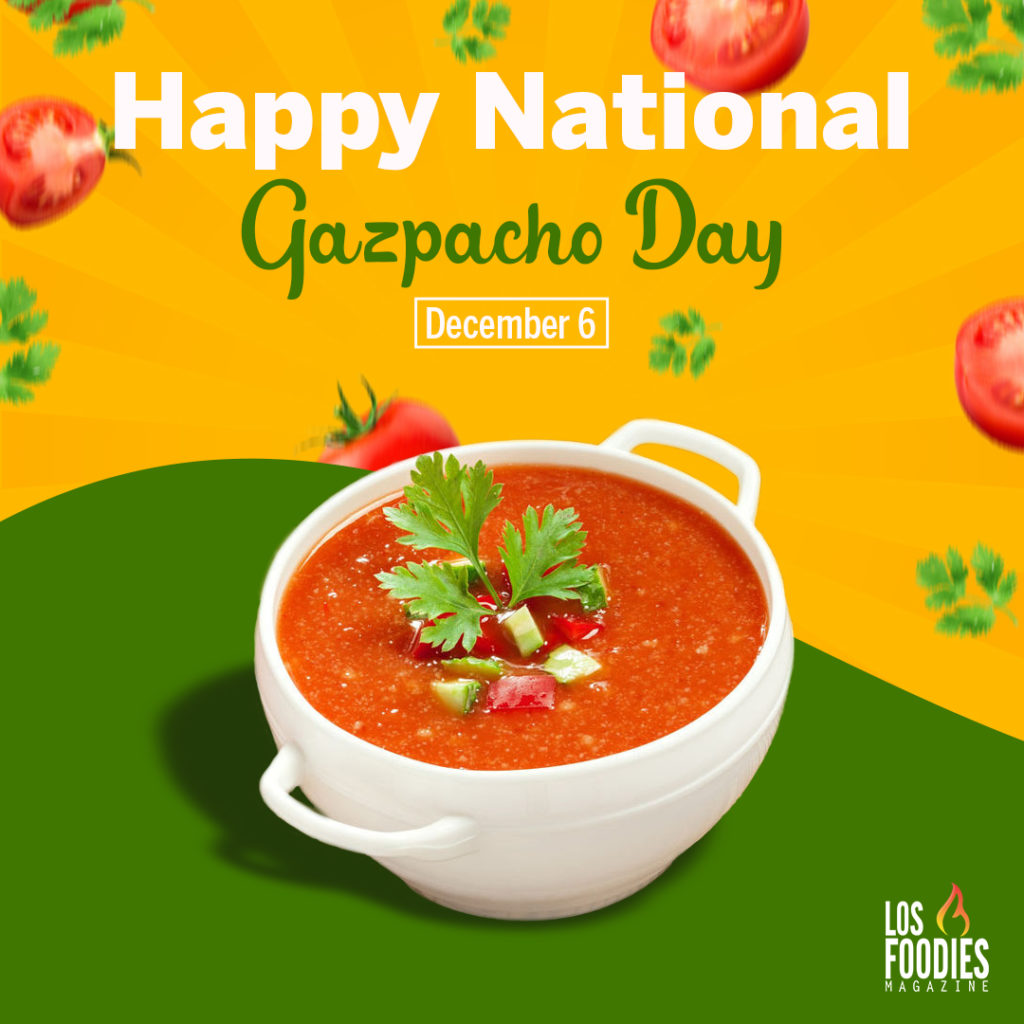National Gazpacho Day is a dish that was adjusted and changed by territorial preferences because of its straightforwardness. The key to a decent gazpacho lies in the extent of its fixings. To adjust flavors the soup must be checked regularly. Finding the freshest vegetables accessible is the main prerequisite to making a first-class Gazpacho.
The set of experiences and tastes of this soup has advanced all through the hundreds of years as it was adjusted into various societies with different fixings and styles of planning. Gazpacho has turned into a fundamental piece of Spanish and Portuguese cooking and is likewise famous in the US. The beginning of this soup can be followed back to the Greco-roman times. A combination of bread, garlic, salt, olive oil, and vinegar were taken by the Roman officers when they went along the realm streets. The Romans acquainted Gazpacho with Spain and from that point, Gazpacho went on a world visit.

However Gazpacho is currently prominently known as a variation of the dull tomato soup, it was not only a superior tomato soup in those days. The dish had advanced enormously from the plain laborer style blend of day-old bread, garlic, and stock to its current structure.
At the point when the dish was first acquainted with Spain from Rome, the fixings utilized were bread, olive oil, water, vinegar, and garlic. It was consolidated into Andalusian cooking particularly in Seville, Granada, Córdoba, and the Al-Andalus districts. Each Andalusian area had a variation of Gazpacho to such an extent that one could even recognize your place by checking out your Gazpacho.
National Gazpacho Day was a staple in Andalusia among the day workers who worked in the grape plantations, woods fields, and estates. They were given bread and oil for their food proportion. The worker-style Gazpacho was made by absorbing bread water followed by the expansion of oil, garlic, and salt for some extra zing. Pepper, cucumbers and whatever was newly accessible during the season was likewise remembered for the soup. Mortar was utilized to crush this blend in a wooden bowl. This formula gave sustenance extinguished thirst and had a cooling impact on the body, supporting the day workers as they worked under the sweltering sun.
It was uniquely in the nineteenth century that tomatoes were utilized as a base for the red Gazpacho. This adaptation of the soup became famous around the world. Cutting-edge plans of Gazpacho include fixings like diced organic products, balsamic vinegar, vegetables, hard-bubbled eggs, bacon, ham, or bread garnishes. Gazpacho has gone through plenty of adjustments from the time it was presented in Andalusia as far as surface, shading, consistency, and toppings,
A typical saying in Spain is, “De gazpacho no roughage empacho” and that implies there will never be a lot of Gazpacho. Gazpacho can substitute any dinner or bite any time and is a movement amicable dish. Extra Gazpacho can be likewise used as dressing or sauce for plates of mixed greens and pasta. The fluctuation and straightforwardness of this dish have conveyed its name and history to current-day cooking.

The Los Foodies Magazine content team is dedicated to showcasing New Mexico’s food culture through stories, recipes, events, and local business features. They create engaging content that connects readers with the chefs, restaurants, and flavors that define the community.
View all posts Los Foodies Magazine Content Team